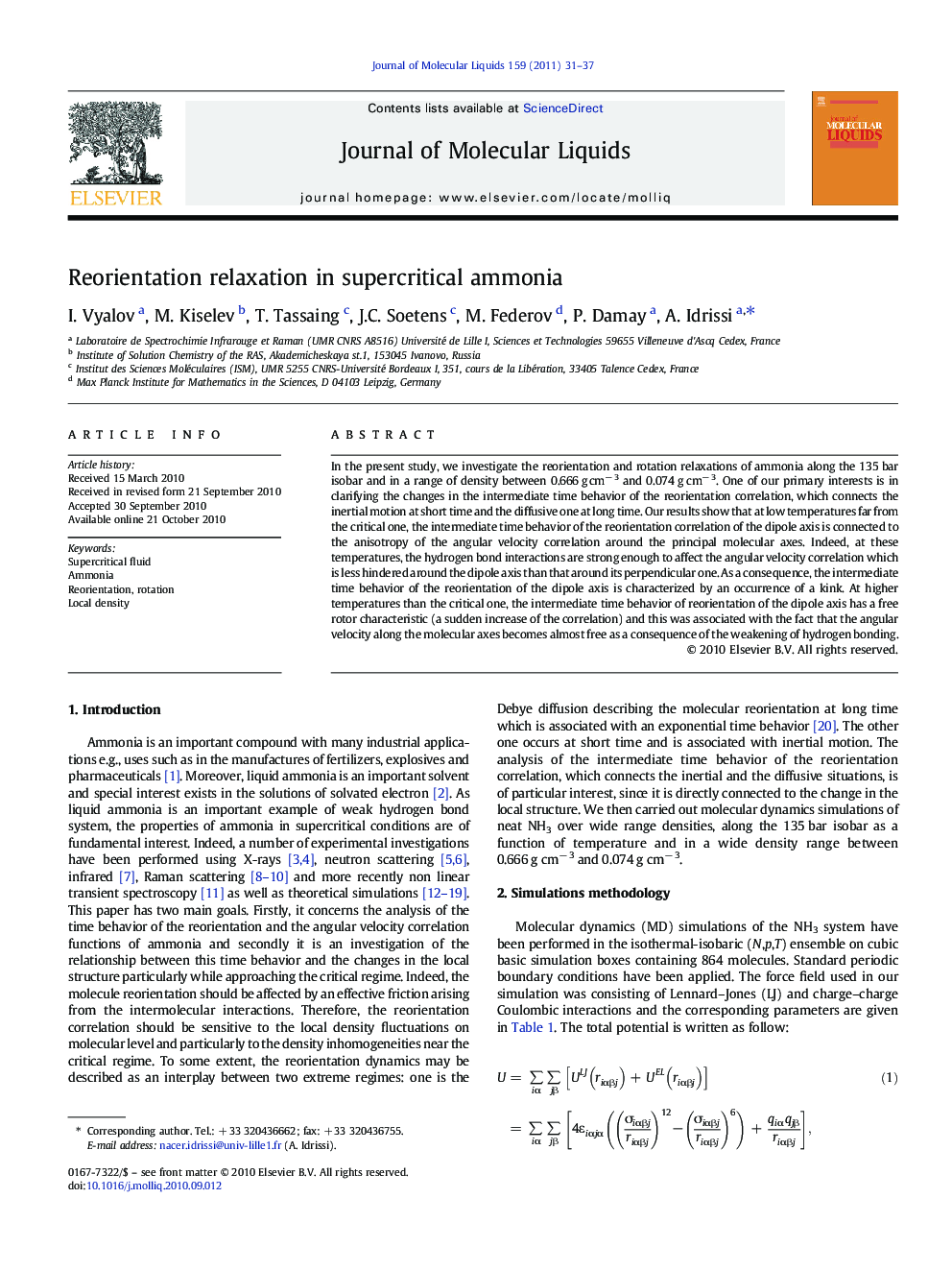| Article ID | Journal | Published Year | Pages | File Type |
|---|---|---|---|---|
| 5412813 | Journal of Molecular Liquids | 2011 | 7 Pages |
Abstract
In the present study, we investigate the reorientation and rotation relaxations of ammonia along the 135 bar isobar and in a range of density between 0.666 g cmâ 3 and 0.074 g cmâ 3. One of our primary interests is in clarifying the changes in the intermediate time behavior of the reorientation correlation, which connects the inertial motion at short time and the diffusive one at long time. Our results show that at low temperatures far from the critical one, the intermediate time behavior of the reorientation correlation of the dipole axis is connected to the anisotropy of the angular velocity correlation around the principal molecular axes. Indeed, at these temperatures, the hydrogen bond interactions are strong enough to affect the angular velocity correlation which is less hindered around the dipole axis than that around its perpendicular one. As a consequence, the intermediate time behavior of the reorientation of the dipole axis is characterized by an occurrence of a kink. At higher temperatures than the critical one, the intermediate time behavior of reorientation of the dipole axis has a free rotor characteristic (a sudden increase of the correlation) and this was associated with the fact that the angular velocity along the molecular axes becomes almost free as a consequence of the weakening of hydrogen bonding.
Related Topics
Physical Sciences and Engineering
Chemistry
Physical and Theoretical Chemistry
Authors
I. Vyalov, M. Kiselev, T. Tassaing, J.C. Soetens, M. Federov, P. Damay, A. Idrissi,
